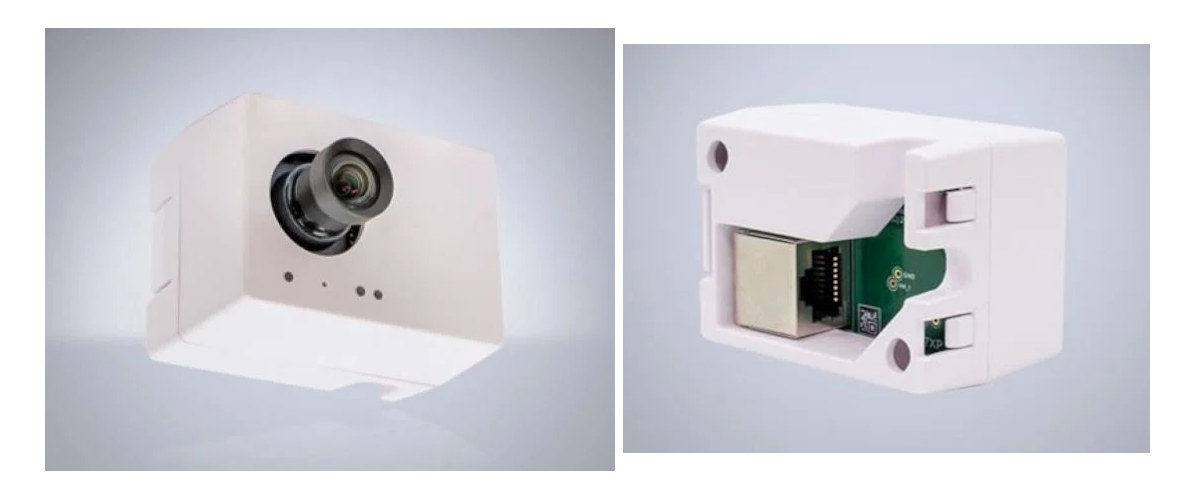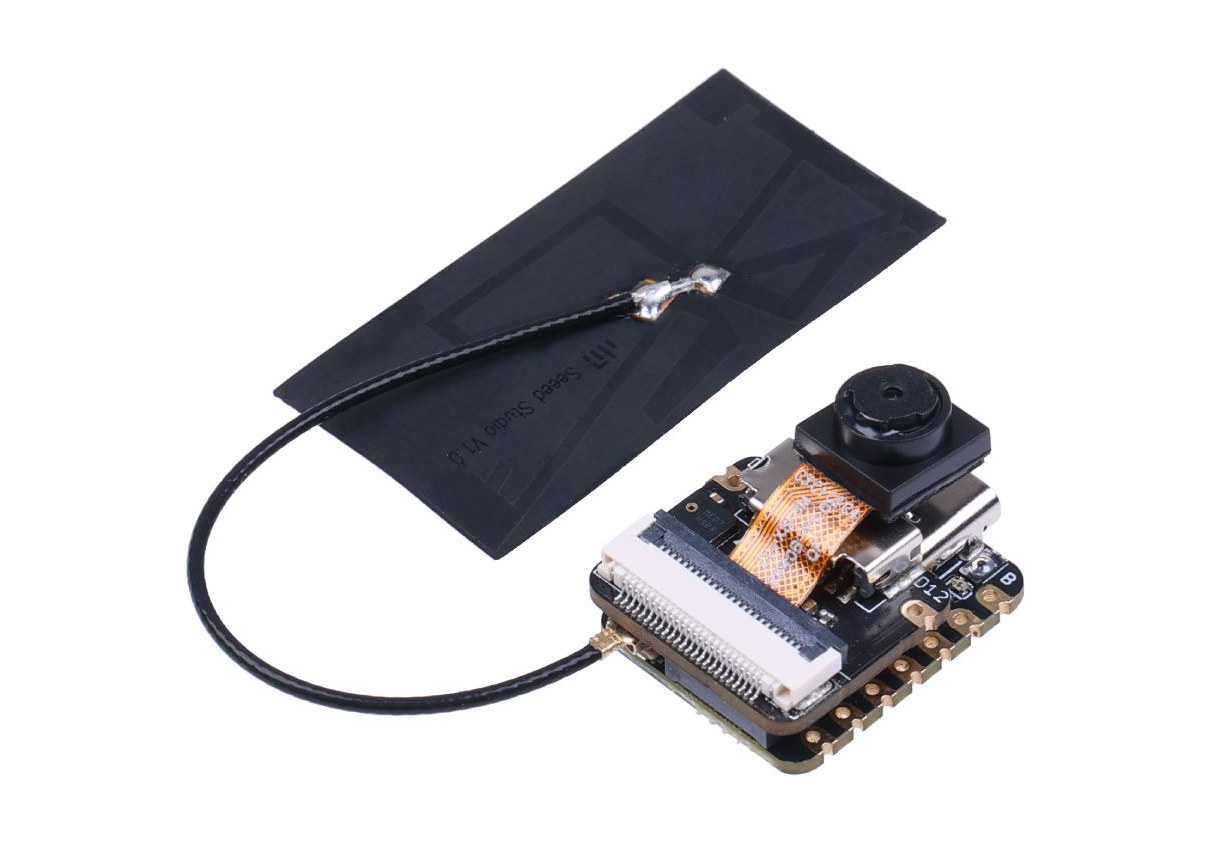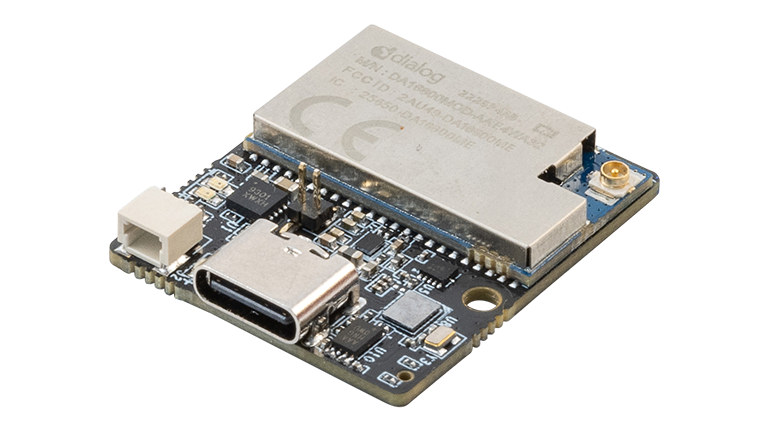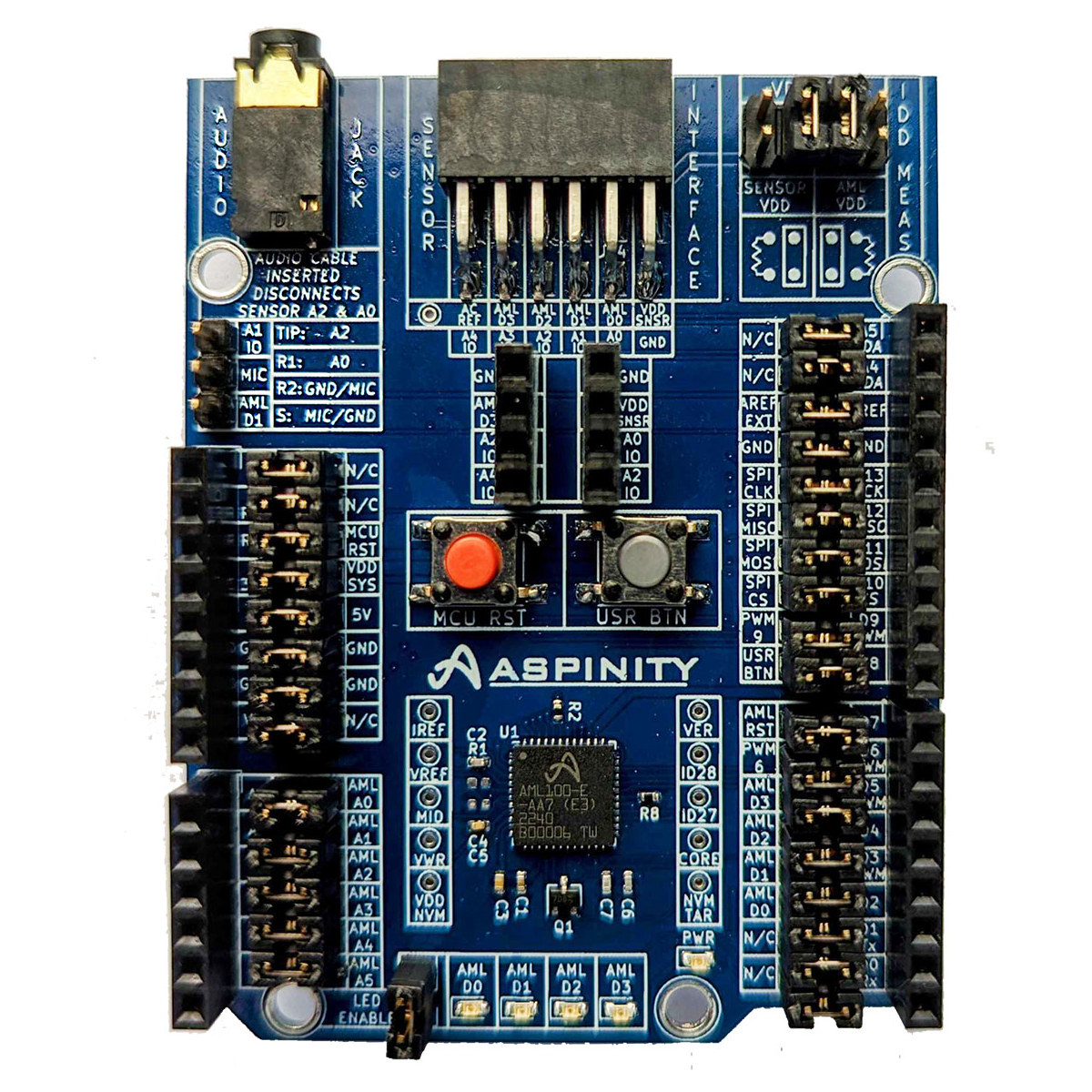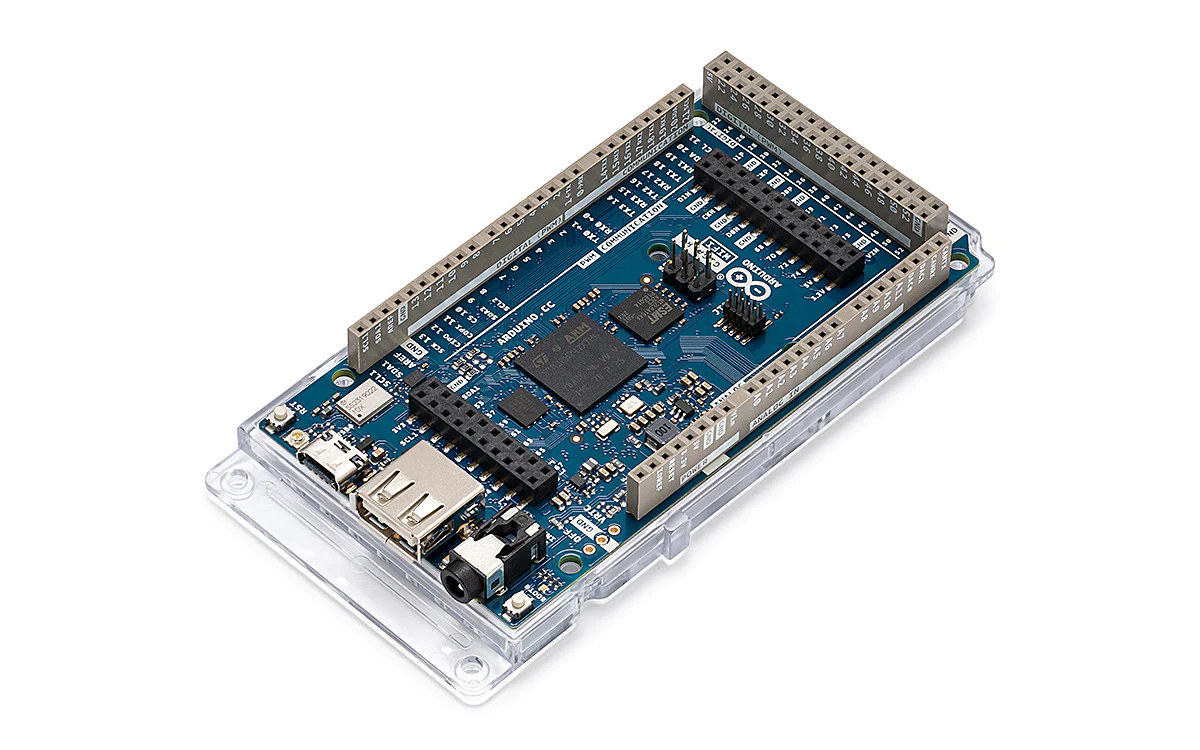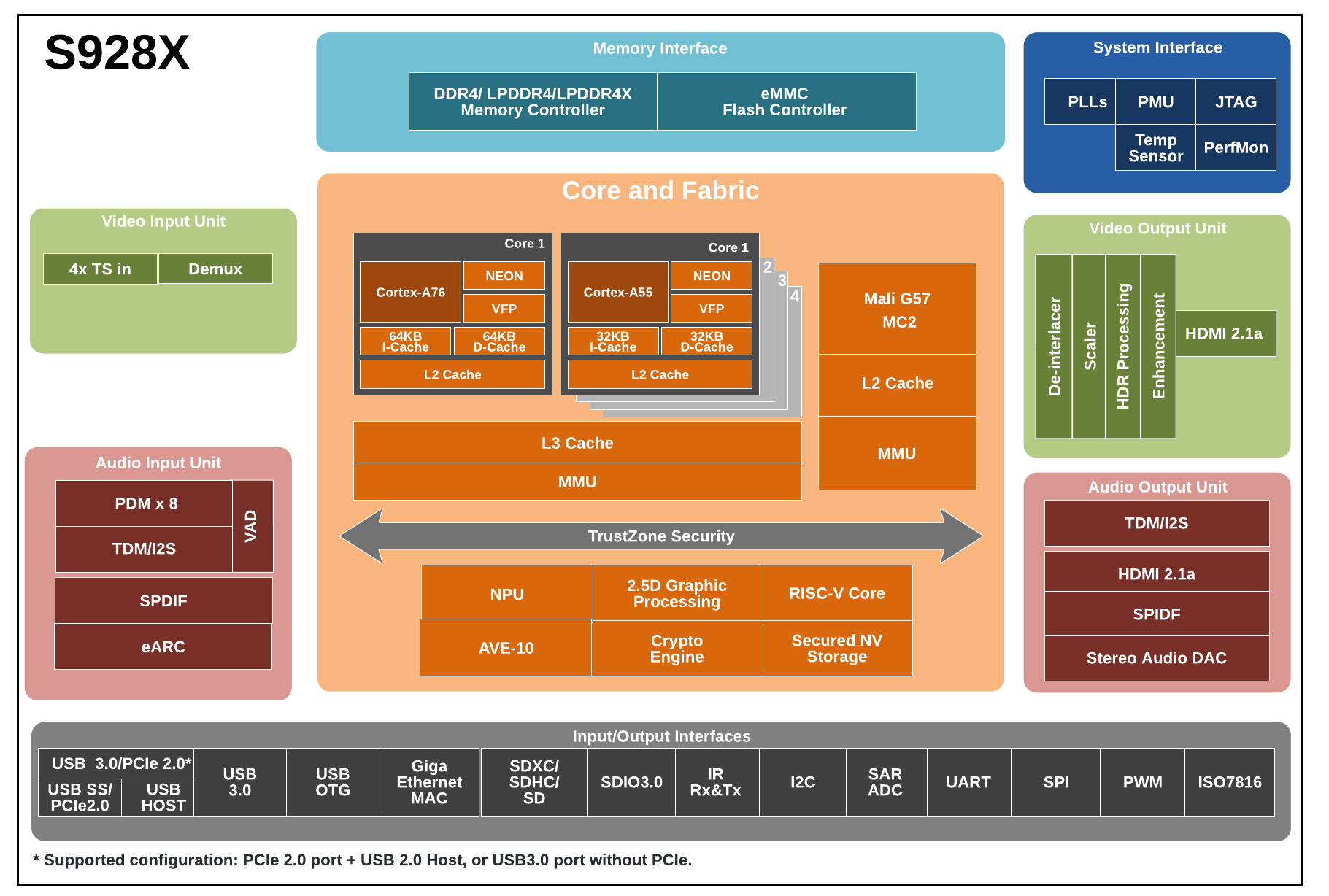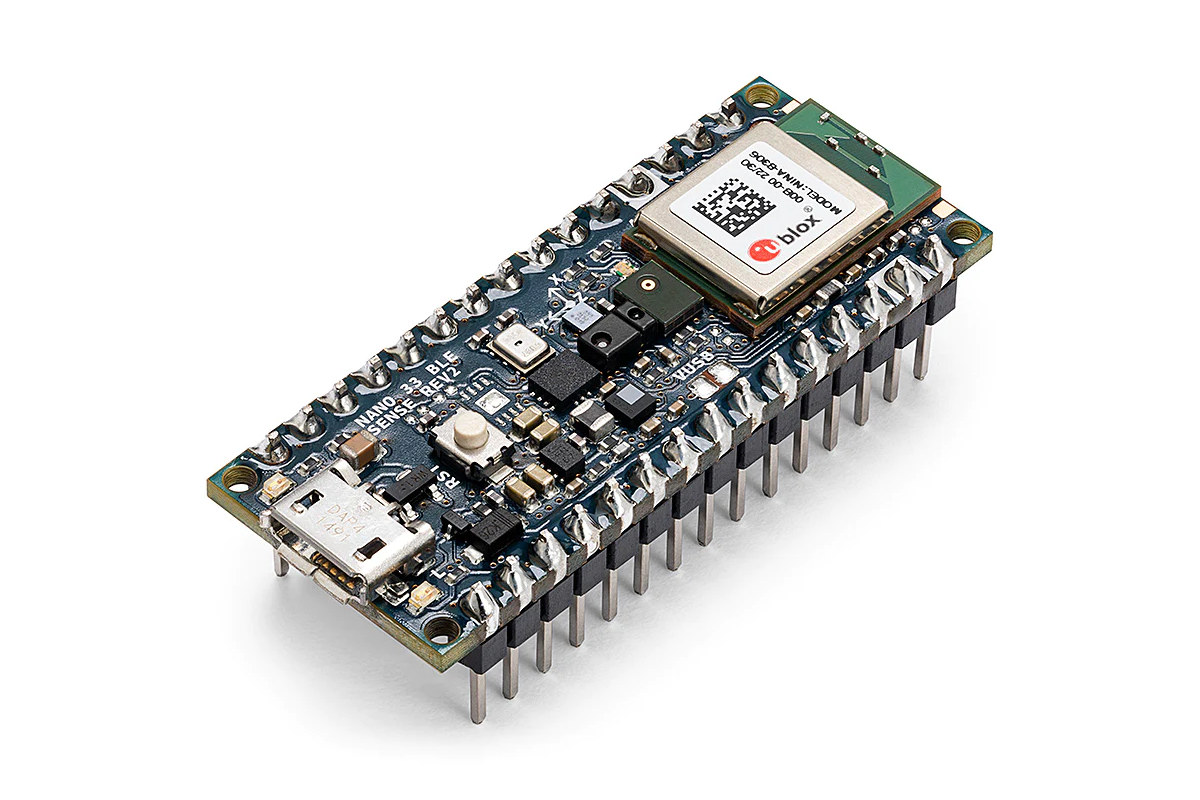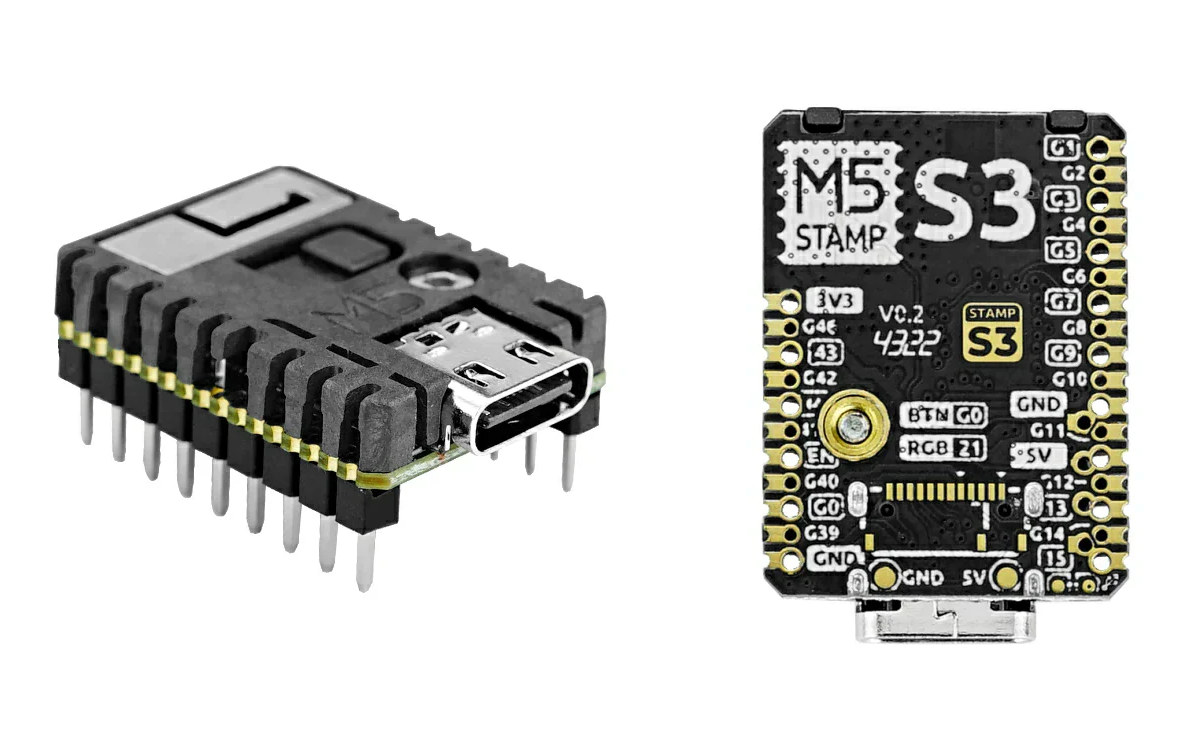Raspberry Pi recently received a strategic investment from Sony (Semiconductor Solutions Corporation) in order to provide a development platform for the company’s edge AI devices leveraging the AITRIOS platform. We don’t have many details about the upcoming Raspberry Pi / Sony device, so instead, I decided to look into the AITRIOS platform, and currently, there’s a single hardware platform, LUCID Vision Labs SENSAiZ SZP123S-001 smart camera based on Sony IMX500 intelligent vision sensor, designed to work with Sony AITRIOS software. LUCID SENSAiZ Smart camera SENSAiZ SZP123S-001 specifications: Imaging sensor – 12.33MP Sony IMX500 progressive scan CMOS sensor with rolling shutter, built-in DSP and dedicated on-chip SRAM to enable high-speed edge AI processing. Focal Length – 4.35 mm Camera Sensor Format – 1/2.3″ Pixels (H x V) – 4,056 x 3,040 Pixel Size, H x V – 1.55 x 1.55 μm Networking – 10/100M RJ45 port Power Supply – PoE+ via […]
XIAO ESP32S3 board gets some senses with a camera and microphone module, plus a round touchscreen display
Last week, we wrote about the new XIAO ESP32S3, a tiny ESP32-S3 board from Seeed Studio. The company has now launched the XIAO ESP32S3 Sense adding a camera and microphone module connected through a board-to-board connector, as well as the Round Display for XIAO that can help people easily create wearable devices with a touchscreen based on any board from the XIAO family. XIAO ESP32S3 Sense XIAO ESP32S2 Sense specifications: Wireless MCU – Espressif Systems ESP32-S3R8 dual-core Tensilica LX7 microcontroller @ 240 MHz with 512KB SRAM, 8MB PSRAM, Wi-Fi 4 & Bluetooth 5.0 dual-mode (Classic + BLE) connectivity Storage – 8MB SPI flash, microSD card slot Antenna – External u.FL antenna USB – USB Type-C port for power and programming Camera – OV2640 camera sensor up to 1600×1200 resolution Audio – Built-in digital microphone Expansion I/Os 2x 7-pin headers with 1x UART, 1x I2C, 1x SPI, 11x GPIO (PWM), 9x […]
Tiny RASynBoard combines Renesas RA6M4 MCU with Syntiant NDP120 ML accelerator, WiFi & BLE module, and some sensors
Avnet RASynBoard is a tiny board that packs a lot of features in a 30x25mm form factor with a Renesas RA6M4 Cortex-M33 microcontroller, a Syntiant NDP120 Neural Decision Processor, a Renesas (Previously Dialog Semi) DA16600 Wi-Fi 4 & Bluetooth 5.1 combo module, and a 6-axis inertial measurement unit (IMU) and digital microphone from TDK. The RASynBoard is offered as part of an EVK with the Core Board described above plus an IO board with headers, a Pmod connector, a MikroE Shuttle Click header, a microSD card slot for storage, and a built-in debugger, plus two buttons and an RGB LED. RASynBoard specifications: Main microcontroller – Renesas RA6M4 Arm Cortex-M33 microcontroller @ 200 MHz with 1 MB flash memory, 256 KB SRAM ML accelerator – Syntiant NDP120 Neural Engine based on Syntiant Core 2 Deep Neural Network, Arm Cortex M0 and HiFi 3 DSP Wireless module – Renesas DA16600 2.4 […]
Aspinity AB2 AML100 Arduino Shield supports ultra-low-power analog machine learning
Aspinity AB2 AML100 is an Arduino Shield based on the company’s AML100 analog machine learning processor that reduces power consumption by 95 percent compared to equivalent digital ML processors, and the shield works with Renesas Quick-Connect IoT platform or other development platforms with Arduino Uno Rev3 headers. The AML100 analog machine learning processor is said to consume just 15µA for sensor interfacing, signal processing, and decision-making and operates completely within the analog domain offloading most of the work from the microcontroller side that can stay its lowest power state until an event/anomaly is detected. Aspinity AB2 AML100 Arduino Shield specifications: ML chip – Aspinity AML100 analog machine learning chip Software programmable analogML core with an array of configurable analog blocks (CABs) with non-volatile memory and analog signal processing Processes natively analog data Near-zero power for inference and events detection Consumes <20µA when always-sensing Reduces analog data by 100x Supports up […]
Arduino GIGA R1 WiFi board launches with STM32H7 MCU, up to 76 I/O pins
Arduino GIGA R1 WiFi board brings the STM32H7 dual-core Cortex-M7/M4 microcontroller found in the Portenta H7 boards to the larger Arduino Mega/Due form factor with up to 76 GPIO pins. As its name implies, the board also comes with a WiFi 4 (and Bluetooth 5.1) module, as well as an audio jack, a USB Type-C port for programming, a USB 2.0 Type-A host port, and extra connectors for a display and a camera. Arduino GIGA R1 WiFi board specifications: Microcontroller – STMicro STM32H747XI Cortex-M7 @ 480 MHz + M4 @ 200 MHz MCU with 2MB dual-bank Flash memory, 1 MB RAM, Chrom-ART graphical hardware accelerator System Memory – 8MB SDRAM Storage – 16MB QSPI NOR flash Connectivity – 2.4GHz WiFi 802.11b/g/n up to 65 Mbps and Bluetooth 5.1 BR/EDR/LE via Murata 1DX module Display – 20-pin header (J5) Camera – 20-pin Arducam camera header (J6) USB 1x USB Type-C port […]
Amlogic S928X specifications – A penta-core Arm Cortex-A76/A55 SoC with Mali-G57 GPU, 3.2 TOPS NPU
Amlogic S928X Cortex-A76/A55 will soon power some 8K TV boxes running Android TV from SDMC and others, and we now have detailed specifications as a “Quick Reference Manual” dropped in my inbox last night. While like most Amlogic processors, the S928X is designed for TV boxes, the penta-core SoC may end up in affordable yet powerful single board computers with features such as HDMI 2.1a, Gigabit Ethernet, PCIe 2.0 or USB 3.0. Amlogic S928X specifications: CPU sub-system 1x Arm Cortex-A76 core and 4x Arm Cortex-A55 cores in big.LITTLE configuration NEON and Crypto extensions Private L2 cache and unified system L3 cache Build-in RISC-V core for system control processing GPUs Arm Mali-G57 MC2 3D GPU with support for OpenGL ES 3.2, Vulkan 1.2, and OpenCL 2.0 2.5D graphics processor for scaling, alpha, rotation, and color space conversion operations VPU Amlogic Video Engine (AVE) with dedicated hardware decoders and encoders Decoding AV1 […]
Arduino Nano 33 BLE Sense Rev2 switches to BMI270 & BMM150 IMUs, HS3003 temperature & humidity sensor
Arduino Nano 33 BLE Sense Rev2 is a new revision of the Nano 33 BLE Sense machine learning board with basically the same functionality but some sensors have changed along with some other modifications “to improve the experience of the users”. The main changes are that STMicro LSM9DS1 9-axis IMU has been replaced by two IMUs from Bosch SensorTech, namely the BMI270 6-axis accelerometer and gyroscope, and the BMM150 3-axis magnetometer, a Renesas HS3003 temperature & humidity sensor has taken the place of an STMicro HTS221, and the microphone is now an MP34DT06JTR from STMicro instead of an MP34DT05. All of the replaced parts are from STMicro, so it’s quite possible the second revision of the board was mostly to address supply issues. Arduino Nano 33 BLE Sense Rev2 (ABX00069) specifications: Wireless Module – U-blox NINA-B306 module powered by a Nordic Semi nRF52840 Arm Cortex-M4F microcontroller @ 64MHz with 1MB […]
M5Stamp S3 WiFi and BLE IoT module offers up to 23 GPIOs through 2.54mm and 1.27mm pitch holes
M5Stamp S3, aka M5Stamp ESP32S2 or Stamp S3, is a tiny ESP32-S3 WiFi & Bluetooth LE (BLE) IoT module with a USB Type-C port, over 20 I/Os available through 2.54mm and 1.27mm pitch headers and castellated holes, and a heat-resistant cover. Many of the “new” ESP32-S3 hardware platforms launches these days are often updates from an ESP32 design, and the M5Stack’s M5Stamp S3 is no exception building on the original M5Stamp Pico, and its ESP32-C3 variants, namely M5Stamp C3 and C3U. M5Stamp S3 specifications: WiSoC – Espressif Systems ESP32-S3FN8 dual-core 32-bit Xtensa LX7 microcontroller with AI vector instructions up to 240MHz, RISC-V ULP co-processor, 512KB SRAM, 2.4GHz WiFi 4 (802.11b/g/n), Bluetooth 5.0 BLE + Mesh, 8MB flash as found in the M5Stack ATOMS3 (Lite). Connectivity 2.4 GHz WiFi 4, 20 MHz and 40 MHz bandwidth, IEEE 802.11 b/g/n protocol, up to 150 Mbps Bluetooth 5, Bluetooth Mesh, with supports for […]


